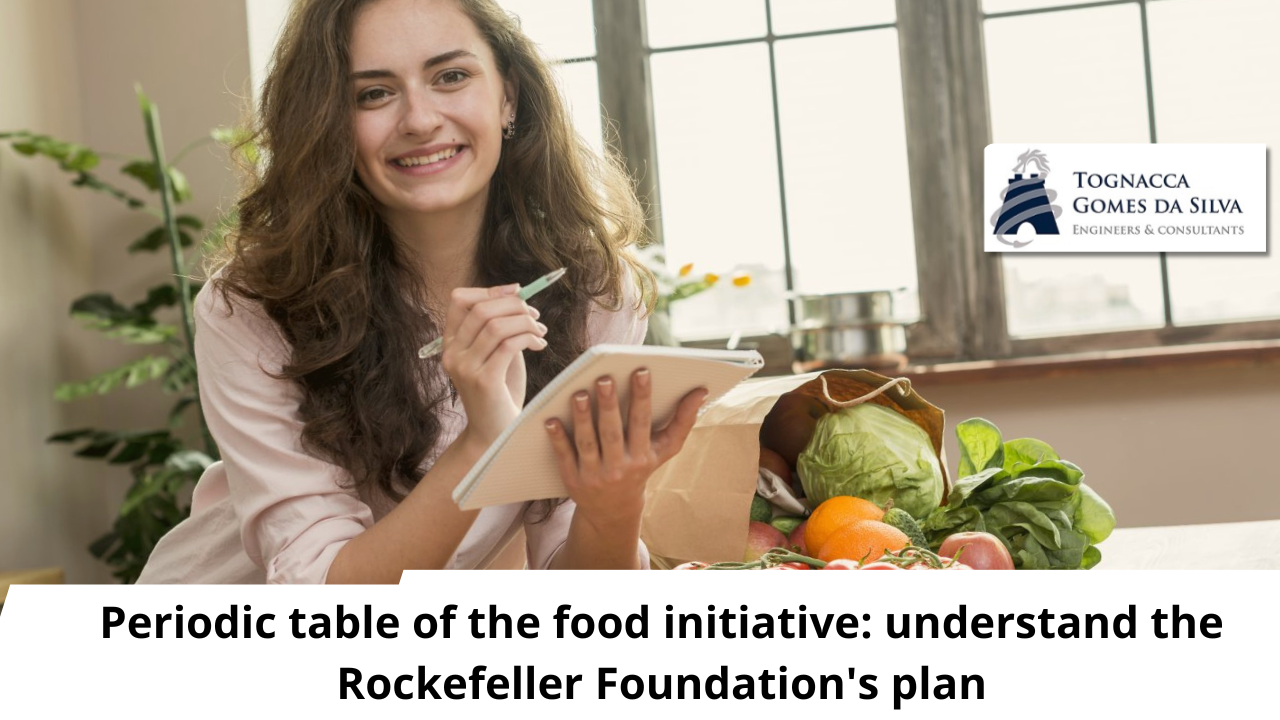Discover how the Rockefeller Foundation is transforming our understanding of food by uniting traditional wisdom and scientific advances with the Periodic Table Food Initiative (PTFI).
From curious boy to innovative scientist
Since he was a boy, John de la Parra was curious about plants on his family’s farm in Boaz, Alabama. His grandmother taught him about the medicinal properties of plants. Thus, this passion for science led him to become director of the Rockefeller Foundation’s Food Initiative. The foundation, created in 1913, invests billions to transform our understanding of food. The Periodic Table of Food Initiative (PTFI) captures and analyzes the biochemical properties of foods.
From this, John de la Parra and his team want to unite ancestral wisdom and modern science. They seek to discover the medicinal and nutritional potential of the foods we consume daily.
Traditional wisdom and modern science meet at PTFI
The idea that food has medicinal properties is ancient and rooted in different cultures. However, modern science has only scratched the surface of this knowledge. Traditional societies revered certain foods for their healing properties. In this sense, PTFI intends to explore these benefits further.
“For centuries, traditional societies have revered certain foods for their medicinal and therapeutic properties,” says de la Parra. “But the scientific community has only scratched the surface of understanding the biochemical composition and properties of what we consume.”
PTFI uses advanced technologies such as mass spectrometry and artificial intelligence. Thus, they reveal the secrets of ancient food wisdom and validate them scientifically.
Discover the biochemistry of food with PTFI
The Periodic Table Food Initiative (PTFI) includes a research database. It captures known and unknown biochemical properties of food, called “dark matter”. In this sense, Selena Ahmed, global director of PTFI, explains that less than 1% of food biomolecules have been cataloged by nutritional science. So most of what we consume daily is still a mystery.
“Not only have these foods been invisible to nutritional science, but an estimated 95% of food biomolecules have escaped our analysis and do not appear on food labels. We may think we know what we are eating, but most of the time we have limited understanding,” says Selena Ahmed.
More than calories and nutrients
PTFI wants to revolutionize the way we see food. For decades, the reductionist view prevailed, simplifying foods to essential calories and nutrients. Maya Rajasekharan, director general for Africa at the International Bioversity Alliance and director of strategic integration and engagement at PTFI, explains that this approach is about to change. Therefore, PTFI is bringing a new perspective, analyzing the biochemical diversity of foods and their implications for human and planetary health.
For example, MarkerLab, an online visualization tool developed by Verso Biosciences, allows researchers and the public to explore PTFI data. Chi-Ming Chien, co-founder of Verso Biosciences, explains that the interface makes it easy to compare foods and compounds. Thus, new scientific discoveries are promoted.
Furthermore, PTFI values traditional ecological knowledge. In addition to collecting chemical data, the initiative collects metadata – additional information that describes foods, such as cultivation methods, place of origin and cultural significance. In this sense, Bruce German, president of the PTFI Scientific Advisory Committee and director of the Foods for Health Institute, at the University of California, Davis, highlights the importance of this holistic approach:
“Agriculture is one of the main contributors to climate change and how we manage the planet… The only way to align the necessary step is to know what the food space is.”
PTFI centers of excellence around the world
To ensure cultural and geographic inclusion, PTFI has established nine Centers of Excellence across all major continents. These centers, located in low- and middle-income countries, lead biomolecular analysis and regional translation of dietary data. Institutions such as the University of Adelaide in Australia, the University of California, Davis, and the Kwame Nkrumah University of Science and Technology in Ghana are at the forefront of this initiative.
Understanding food composition is critical to empowering stakeholders across the food system. PTFI is highlighting neglected foods, such as acacia seeds from the Acacia genus, used by Aboriginal Australians. Many of these species are missing from global food databases. PTFI raises important questions about its nutritional and medicinal qualities and its role in ecosystems.
The future of food with the food initiative’s periodic table
The implications of PTFI’s work are profound. The initiative can validate traditional practices and pave the way for new evidence-based dietary guidelines. This can lead to more natural, affordable and effective health solutions. Thus, a sustainable diet that respects biodiversity is promoted.
Bruce German highlights that agriculture is one of the main contributors to climate change. He believes that the only way to align the necessary step is to fully understand what we are consuming. So PTFI, by combining traditional wisdom with modern science, is creating a sustainable and resilient food system.
“Each of us has a genetic heritage that evolved in a specific place, eating specific foods. Knowing the chemistry of these foods can allow us to make more accurate health recommendations,” adds de la Parra.
A new era for nutrition with PTFI
The Food Initiative Periodic Table is more than a scientific endeavor. She is a bridge between the past and the future. It is a fusion of ancient wisdom with cutting-edge technology. So, as science explores and validates the medicinal properties of traditional foods, new possibilities for health, sustainability and global well-being emerge. This is the beginning of a new era in understanding food as medicine. It is an era that honors the past while embracing the future.
( fonte: bruna oliveira/ digital agro)



